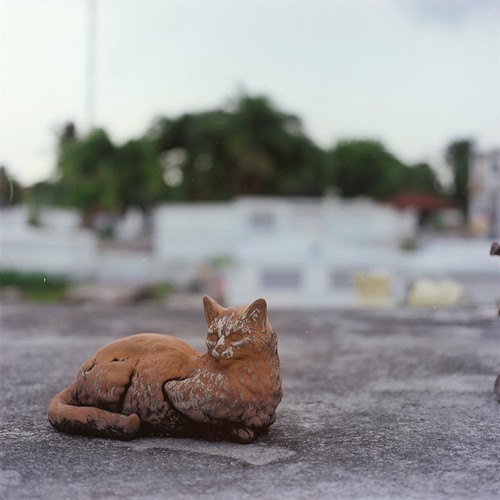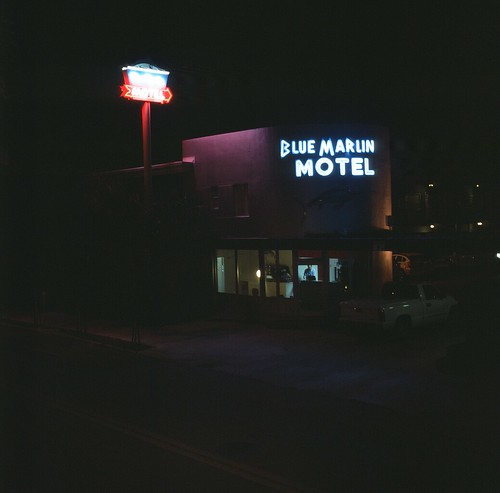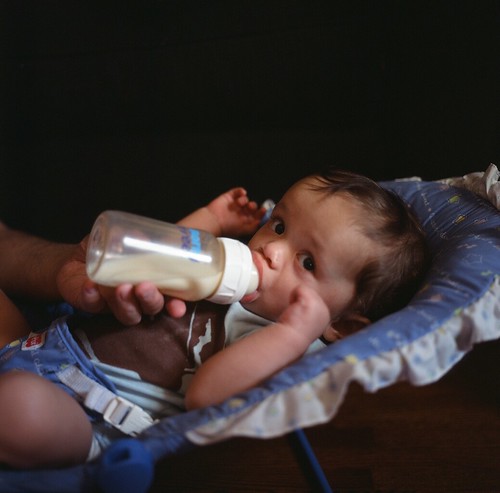Article first published as DVD Review: Sweet Hostage on Blogcritics.
In this age of the 24-hour news cycle, we take it for granted that producers of reality television and made-for-cable movies will respond quickly to this morning’s headlines. Such was the case even in 1975, when the fondly remembered Sweet Hostage was featured as ABC’s Friday Night Movie. Today’s audiences may appreciate it for melodrama and even a little camp factor, but they may not be aware of the timeliness of the plot.
Martin Sheen plays Leonard Hatch , a mental patient who as the film opens is reciting Coleridge’s Kubla Khan, right before he escapes from a Boston asylum through a laundry chute. Linda Blair is seventeen-year old Doris Mae Winters, a farmer’s daughter who is wielding a gun when we first see her: she’s just shot a 6-foot rattlesnake and hopes to keep it as a trophy when her hysterical mother (a staple of the 1970s teenage movie - cf The Loneliest Runner) comes along and axes it to pieces. These efficient opening scenes are an overture to the movie’s themes: the ennobling nature of literature; escape from the confines of societal expectations; man vs. nature; sexual hysteria. The characters' names are ripe with meaning as well - Hatch opens up an escape route not simply for himself; Winters is clearly discontent in her life on the farm. It is also obvious that she can fend for herself. However, the only trophy she manages to salvage from her kill is the snake's rattle, which various characters treat as a talisman throughout the film.
This is a pair fated to meet, and when Sheen, on his third or fourth hot car, ends up in New Mexico, he chances upon Blair examining her broken pick-up truck. Their fate is sealed and Sheen takes her hostage in a remote cabin.
Stocklholm Syndrome is the phenomenon where a hostage develops sympathy for their captor. Classified in 1973, its most famous example was the 1974 case of Patty Hearst and her abduction by and later affinity with the Symbionese Liberation Army. When Sweet Hostage was first broadcast, the notion of a hostage falling for their captor was very much in the news. Today it would seem sick if not entirely surprising that a major network would respond to the headlines with what is essentially a romance.
Sheen and Blair have an easy chemistry, so much so that despite her protestations, you never quite fear for her life. Sheen’s star-making turn in Badlands in 1973 also prepared us for a sympathetic depiction of his outlaw urges; and Blair's battle with the devil established her own strength.
Despite the captor's aggression, his intentions seem chaste, even professorial. The literary conceits that Sheen wields are hammier than we have come to expect from him, and we can probably blame a lot of erudite-insane characters on this performance (hello The A Team?). Hatch/Sheen takes to calling his hostage Christabel, after another Coleridge poem. Winters resists her captor’s didactic approaches at first but this becomes part of an enriching teacher-pupil dynamic.
The sympathy between captor and hsotage may be unusual and even distasteful but the actors play it well, especially when the script reins in the literary references that often lean this in the direction of camp. The script by Edward Hume (who went on to script the apocalyptic tv-movie The Day After) can be overheated and the symbolism heavy, with a serpent and an apple signifying Eden. Scenes in the cabin become a haven away from the townspeople, who seem to belong to a different tribe. The cabin itself is like a stage, Sheen and Blair players in a chamber piece reluctantly pulled away from to get provisions - and this is where the Fall begins. They don’t make them like this anymore, and that may be a good thing, but those who like their backwoods romances uncomfortable will love Sweet Hostage.
Like other Warner Archives made-to-order DVDs, the disc does not include any bonus features. You can pre-order it from Amazon, but it's cheaper if you order directy from Warner Archives, where it is available now.
Monday, September 26, 2011
Friday, September 23, 2011
a picture is worth 3000+ words: this week in movie and art reviews
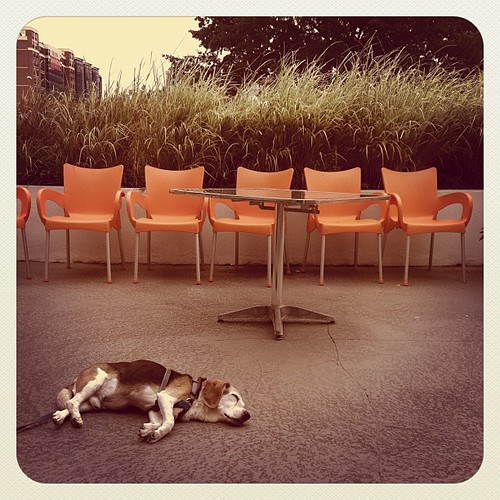 |
| Detail from Patrick McDonough's Doghouse at (e)merge art fair, Capitol Skyline Hotel. Photo by Pat Padua |
I've written that much this week despite a summer cold that's been lingering since early August. My by-lines for other outlets this week:
In the Muse
- Arrr, it’s the Sheet Music of the Week Pirate Edition, Matey! which I liberally edited and wrote about a quarter of.
- Pic of the Week: Belated Birthdays Edition, in which I wrote about Muhal Richard Abrams and Paul Williams, and got to proclaim my newfound fondness for Ishtar.
- Congratulations to Dafnis Prieto, 2011 MacArthur Fellow
DCist
- Photo of the Day: September 22, 2011
- Popcorn & Candy: Death and Transfiguration Edition - I recommend Tsui Hark's Detective Dee and the Mystery of the Phantom Flame
- Out of Frame: Shut Up Little Man! An Audio Misadventure . Recommended, thoug h Ireally wanted to smack some of the people interviewed.
- (e)merge art fair @ Capitol Skyline Hotel
Monday, September 19, 2011
photobook review: 26° 81°: photographs of immokalee, florida, by joshua dudley greer

Palm trees; orange groves; flamingo-pink houses. These are the kinds of images that the State of Florida brings to mind, and these are an integral part of 26° 81°, Joshua Dudley Greer’s collection of large-format photos. But Greer goes deeper than that in his study of the town of Immokalee: to the trailer park, the migrant worker, the anonymous apartment buildings. In my own trips to Central and South Florida I have found a lot of poetry beyond the Mouse and his kin, in the scruffy commerce of small towns like Webster and Brooksville. Greer finds that and more in the people of Immokalee.
Immokalee, fifty miles west of Naples in Southwest Florida, was struck by Hurricane Wilma in 2005, which makes the town an apt stand-in for the struggle and resilience of the natives and immigrants who try to make a living there. Greer’s portraits are sensitive and dignified: of the dowager who is the last surviving daughter of the original settlers of the town, to the middle-aged African-American Reverend, to the young woman celebrating her Quinceañera.
26° 81° is an admirable project with its heart in the right place - half the proceeds of the book go to the Immokalee Foundation, a non-profit that “provides educational tools, opportunities, and encouragement to the children of Immokalee, Florida.” If strong photos and honorable intentions were all that made a successful photobook, then Greer’s monograph would easily pass the audition. But the old saw that you can’t judge a book by it’s cover does not apply if the cover works against the contents, and this is where the book falls short of something more. The handsome binding is wrapped a banal jacket that depicts a powder blue map of the area; perhaps it was the book’s publisher, Joseph Dednik, (credited as “chairman of Prescient Ridge Management”) who saw fit to make the book look like a company report, its title reducing the humanity of the photographs to points on a graph.
Why not just call it “Immokalee?” Geography can be a potent metaphor - it may not be fair to compare this to of Alec Soth’s great Sleeping by the Mississippi, but the use of large-format cameras in a geographically themed project sort of begs the comparison. Where that book’s title concept and cover enriched the work, the framing device here seems made to seduce the policy wonk more than the general photography consumer. I learned about the book from a photography blog that showcased Greer's photography. Had I seen it on the table at Dashwood Books, I may never have opened it. Perhaps the marriage of aesthetic and statiscial concerns describes where the town Immokalee, and the nation, has failed its citizens. Unfortunately, the book’s design does no favors for the strong work inside.
Saturday, September 17, 2011
movie review: black zoo
I've been sick lately and may have been too hard on this. It's not a good movie but if it's sounds like fun to you, you'll probably like it. Just keep a finger on the fast-forward button. Article first published as DVD Review: Black Zoo on Blogcritics.
Who is the most dangerous animal? Lion? Tiger? Robert Gordon’s 1963 thriller Black Zoo suggests the answer is man. The complicated relationship between man and beast is the stuff of philosophy as well as the B-movie, and Black Zoo, which also goes by the clarifying title Horrors of the Black Zoo, addresses this time-honored theme with murderous beasts indeed. But simply adding “horrors” to the marquee does not alchemically create an effective cinematic scream fest. Vivid cinematography and elegant composition can’t save producer Herman Cohen’s lousy script. But the film is not without its moments.
 Cohen is known for B-movies that don’t quite live up to their premise, like the early Michael Landon picture I Was Teenage Werewolf and the late-career Joan Crawford vehicle Trog. The burden of this dark menagerie is carried by Michael Gough, who starred in two other Cohen productions, Horrors of the Black Museum and Konga. For Black Zoo he takes on the role of organ-playing zoo keeper Michael Conrad, who lords over the animals of his Los Angeles zoo. James Dean wannabe Rod Lauren plays the mute Carl, the zoo keeper's charge, and veteran character actor Elisha Cook plays to his signature bug-eyed strength as he teases a tiger with raw meat. Add to this a memorable gorilla attack that prefigures Chinatown, and the synopsis alone may lure the unsuspecting viewer to pounce.
Cohen is known for B-movies that don’t quite live up to their premise, like the early Michael Landon picture I Was Teenage Werewolf and the late-career Joan Crawford vehicle Trog. The burden of this dark menagerie is carried by Michael Gough, who starred in two other Cohen productions, Horrors of the Black Museum and Konga. For Black Zoo he takes on the role of organ-playing zoo keeper Michael Conrad, who lords over the animals of his Los Angeles zoo. James Dean wannabe Rod Lauren plays the mute Carl, the zoo keeper's charge, and veteran character actor Elisha Cook plays to his signature bug-eyed strength as he teases a tiger with raw meat. Add to this a memorable gorilla attack that prefigures Chinatown, and the synopsis alone may lure the unsuspecting viewer to pounce.
Sadly, a few strong elements do not a well-balanced meal make. The script is stiff, heavy on exposition and light on propulsion, so the handful of startling scenes just lay floating in a pool of mediocre muck. Which is too bad - for a B-movie, the production values are good, the set design and cinematography suitably atmospheric.
Like other Warner Archives made-to-order DVDs, the disc does not include any bonus features, but it’s a new and crisp transfer from a good print. As a document of early sixties fashions and mores, the student of anthropology will find something to chew on in Black Zoo.
But horror aficionados will have to look elsewhere in the Warner Archives catalog for a more fulfilling meal.
Available only from Warner Archives.
Who is the most dangerous animal? Lion? Tiger? Robert Gordon’s 1963 thriller Black Zoo suggests the answer is man. The complicated relationship between man and beast is the stuff of philosophy as well as the B-movie, and Black Zoo, which also goes by the clarifying title Horrors of the Black Zoo, addresses this time-honored theme with murderous beasts indeed. But simply adding “horrors” to the marquee does not alchemically create an effective cinematic scream fest. Vivid cinematography and elegant composition can’t save producer Herman Cohen’s lousy script. But the film is not without its moments.
 Cohen is known for B-movies that don’t quite live up to their premise, like the early Michael Landon picture I Was Teenage Werewolf and the late-career Joan Crawford vehicle Trog. The burden of this dark menagerie is carried by Michael Gough, who starred in two other Cohen productions, Horrors of the Black Museum and Konga. For Black Zoo he takes on the role of organ-playing zoo keeper Michael Conrad, who lords over the animals of his Los Angeles zoo. James Dean wannabe Rod Lauren plays the mute Carl, the zoo keeper's charge, and veteran character actor Elisha Cook plays to his signature bug-eyed strength as he teases a tiger with raw meat. Add to this a memorable gorilla attack that prefigures Chinatown, and the synopsis alone may lure the unsuspecting viewer to pounce.
Cohen is known for B-movies that don’t quite live up to their premise, like the early Michael Landon picture I Was Teenage Werewolf and the late-career Joan Crawford vehicle Trog. The burden of this dark menagerie is carried by Michael Gough, who starred in two other Cohen productions, Horrors of the Black Museum and Konga. For Black Zoo he takes on the role of organ-playing zoo keeper Michael Conrad, who lords over the animals of his Los Angeles zoo. James Dean wannabe Rod Lauren plays the mute Carl, the zoo keeper's charge, and veteran character actor Elisha Cook plays to his signature bug-eyed strength as he teases a tiger with raw meat. Add to this a memorable gorilla attack that prefigures Chinatown, and the synopsis alone may lure the unsuspecting viewer to pounce.Sadly, a few strong elements do not a well-balanced meal make. The script is stiff, heavy on exposition and light on propulsion, so the handful of startling scenes just lay floating in a pool of mediocre muck. Which is too bad - for a B-movie, the production values are good, the set design and cinematography suitably atmospheric.
Like other Warner Archives made-to-order DVDs, the disc does not include any bonus features, but it’s a new and crisp transfer from a good print. As a document of early sixties fashions and mores, the student of anthropology will find something to chew on in Black Zoo.
But horror aficionados will have to look elsewhere in the Warner Archives catalog for a more fulfilling meal.
Available only from Warner Archives.
Friday, September 16, 2011
every camera I own: a tale of two hassys
I used to think I'd never own a Hasselblad. The combination of cost and technique seemed forbidding and out of reach. But it wasn't too long after I started revisiting photography in earnest that I had the opportunity to buy a vintage Hasselblad 500CM, with a snazzy finder, at a good price.
 |
| December 2005. |
It's the best camera I've ever had, maybe even better than the 503CW I switched it out with about a year later. Just looking through the viewfinder and the Hasselblad glass was a pleasure.
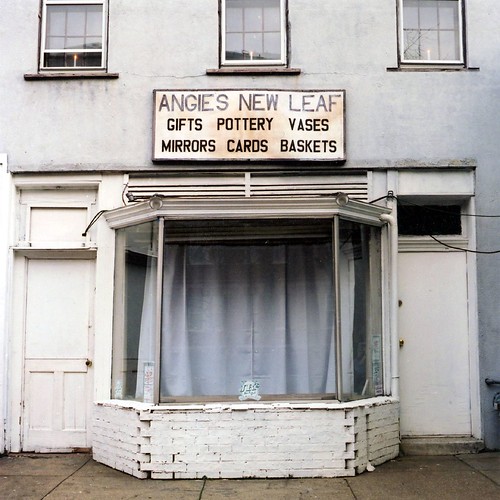 |
| January 2006. From the first roll I shot with my first Hassy. |
I've made some of my best photos with it, including the shot that makes up the background image of this blog.
 |
| St. Augustine, 2007 |
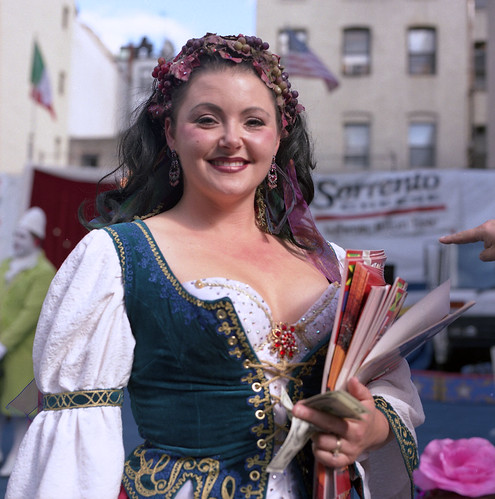 |
| Tosca Zoppe, Little Italy, New York, 2006 |
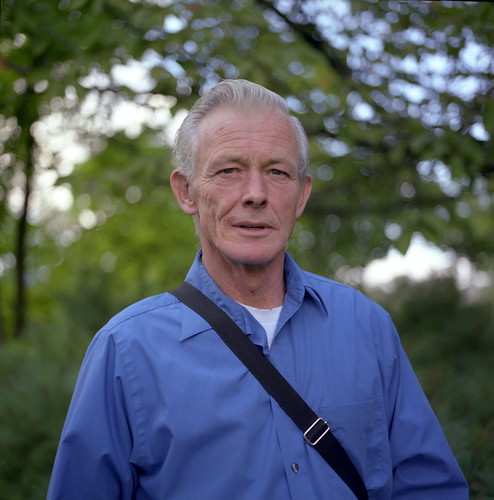 |
| Bill, Portland, Oregon, 2006 |
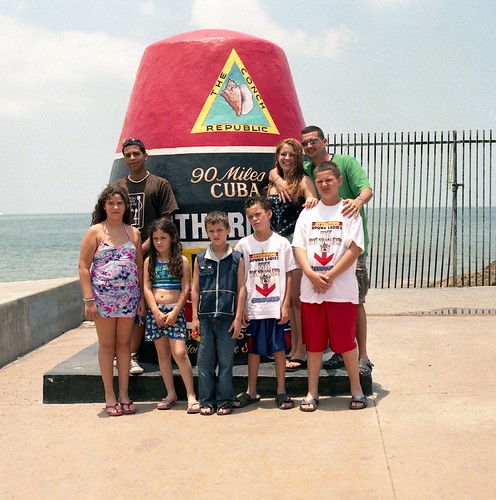 |
| The Lowest Point in America, Key West, 2006. I had no idea what I had when I made the shot, but look at the large view here. |
I took the Hassy 503CW back to Florida last month.
Tuesday, September 13, 2011
photodvd review: Bill Cunningham New York
Article first published as DVD Review: Bill Cunningham New York on Blogcritics.
Bill Cunningham New York , the impressive feature debut from director Richard Press, may well be the best documentary ever made about a photographer. That the photographer documents New York, for the New York Times Style section and other outlets, makes this one of the great films about New York, all the more important as it captures a dying world. Cunningham was one of the last holdouts in the artists’ apartments above Carnegie Hall, whose legendary tenants over the years included Marlon Brando and Leonard Bernstein. This scene was further documented in the documentary Lost Bohemia, but BCNY gives the viewer a wistful glance at the corporate carnage at work all over the city: the wide open sapce that was once dance studio of Agnes DeMille (choreographer of Oklahoma and other milestones of American Musical Theater) has been recently broken up into telemarketer’s cubicles.
, the impressive feature debut from director Richard Press, may well be the best documentary ever made about a photographer. That the photographer documents New York, for the New York Times Style section and other outlets, makes this one of the great films about New York, all the more important as it captures a dying world. Cunningham was one of the last holdouts in the artists’ apartments above Carnegie Hall, whose legendary tenants over the years included Marlon Brando and Leonard Bernstein. This scene was further documented in the documentary Lost Bohemia, but BCNY gives the viewer a wistful glance at the corporate carnage at work all over the city: the wide open sapce that was once dance studio of Agnes DeMille (choreographer of Oklahoma and other milestones of American Musical Theater) has been recently broken up into telemarketer’s cubicles.
“If you can’t take money, they can’t tell you what to do, kid.” This is Cunningham’s response to the greedy metropolis, and though he collects a paycheck from The Old Grey Lady, his early work capturing the Downtown 80s scene for Details magazine was largely gratis - and frequently earned him 100-page special issues solely of his work. The octagenarian photographer has documented New York fashion trends for decades - from haute couture runways to the New York gala scene. But it’s not money that draws his voracious lens (“I eat with my eyes,” he tells a waiter who offers him a plate at a gala). The artist finds what people are wearing on the street just as important, even more so.
A photographer who seeks out fashion trends might seem to be judge and jury, but while Cunningham makes aesthetic decisions, he has a fondness for all his subjects. Socialite Annette de la Renta admiringly notes, “I don’t think we’ve ever seen a cruel picture done by Bill.” Cunningham in fact had a falling out with Women’s Wear Daily when they changed his copy to make fun of the subjects.
As a study of a dedicated professional, BCNY is also about obsession . The documentary is populated by some of Cunningham’s favorite subjects: the dandy Patrick McDonald, who never leaves home without his eyebrows and beauty mark in place; Vogue editor Anna Wintour (who declares that if he doesn’t take your picture, “you’re dead!”); Shail Upadhya, the outrageously dressed Nepalese Diplomat (“This used to be my old sofa; the jacket and pants, my ottoman”). This dense film constantly entertains with such colorful personalities. But, as Cunningham explains that he visits Paris regularly “to re-educate the eye,” the film also gently educates the viewer: what makes a dynamic photo, how to put together a comeplling layout, how to organize your obsessions and recognize trends, from fanny packs to chains, from baggy pants to leopard prints, from improvised rain gear to dazzling snow-wear.
Cunningham can find the visual grace in people from all walks of life, and his public face is always smiling. But when that smile breaks, so do you. Despite a certain amount of professional freedom, there is a chilling sense of entrapment to Cunningham’s life. His tiny studio apartment above Carnegie Hall was filled to the short ceiling with magazines and file cabinets of every negative he’s ever made (he is the only New York Times staffer still using film). In a quietly heartbreaking scene near the end of the film, the artist is asked about his personal life; he’s never really had one. His Catholic uprbringing made his sexuality something not to be spoken of. Has his flurry of work been at the expense of his own happiness? Bill Cunningham New York is an unforgettable portrait of a man and a city. It is filled with great joy, but not without the bittersweet.
Bill Cunningham New York
“If you can’t take money, they can’t tell you what to do, kid.” This is Cunningham’s response to the greedy metropolis, and though he collects a paycheck from The Old Grey Lady, his early work capturing the Downtown 80s scene for Details magazine was largely gratis - and frequently earned him 100-page special issues solely of his work. The octagenarian photographer has documented New York fashion trends for decades - from haute couture runways to the New York gala scene. But it’s not money that draws his voracious lens (“I eat with my eyes,” he tells a waiter who offers him a plate at a gala). The artist finds what people are wearing on the street just as important, even more so.
A photographer who seeks out fashion trends might seem to be judge and jury, but while Cunningham makes aesthetic decisions, he has a fondness for all his subjects. Socialite Annette de la Renta admiringly notes, “I don’t think we’ve ever seen a cruel picture done by Bill.” Cunningham in fact had a falling out with Women’s Wear Daily when they changed his copy to make fun of the subjects.
As a study of a dedicated professional, BCNY is also about obsession . The documentary is populated by some of Cunningham’s favorite subjects: the dandy Patrick McDonald, who never leaves home without his eyebrows and beauty mark in place; Vogue editor Anna Wintour (who declares that if he doesn’t take your picture, “you’re dead!”); Shail Upadhya, the outrageously dressed Nepalese Diplomat (“This used to be my old sofa; the jacket and pants, my ottoman”). This dense film constantly entertains with such colorful personalities. But, as Cunningham explains that he visits Paris regularly “to re-educate the eye,” the film also gently educates the viewer: what makes a dynamic photo, how to put together a comeplling layout, how to organize your obsessions and recognize trends, from fanny packs to chains, from baggy pants to leopard prints, from improvised rain gear to dazzling snow-wear.
Cunningham can find the visual grace in people from all walks of life, and his public face is always smiling. But when that smile breaks, so do you. Despite a certain amount of professional freedom, there is a chilling sense of entrapment to Cunningham’s life. His tiny studio apartment above Carnegie Hall was filled to the short ceiling with magazines and file cabinets of every negative he’s ever made (he is the only New York Times staffer still using film). In a quietly heartbreaking scene near the end of the film, the artist is asked about his personal life; he’s never really had one. His Catholic uprbringing made his sexuality something not to be spoken of. Has his flurry of work been at the expense of his own happiness? Bill Cunningham New York is an unforgettable portrait of a man and a city. It is filled with great joy, but not without the bittersweet.
Subscribe to:
Comments (Atom)

